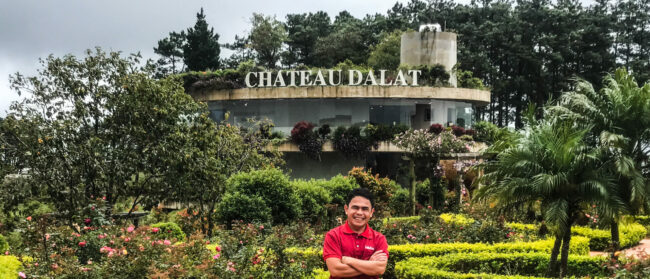Asean has reached a crossroads. The organisation has helped foster the region’s economic development in the past, but tougher tasks lie ahead. Asean’s aim of establishing a single trading market for goods, services and labour in the region by 2015 seems ambitious, political cooperation is lagging behind stated goals, and the creation of a common identity among member states remains in its infancy.
Nevertheless, optimism remains. “The future starts here,” Christine Lagarde, managing director of the International Monetary Fund (IMF), said last November when visiting Malaysia. She highlighted Asia as the bright spot in the world economy: “Clearly, the momentum is here, the dynamism is here.”
Trade volume within Asean grew by more than 15% from 2010 to 2011, reaching $598 billion, while the region’s total trade advanced 16.8% to $2.4 trillion over the same period, and foreign direct investment (FDI) inflows accelerated 23% to $114 billion, according to the bloc’s statistics.
Economists are optimistic about the future of the region – home to some 600 million people – even against the background of a lingering crisis in Europe and other weak spots in the world economy. “When we look forward, we expect pretty dynamic growth,” said Rajiv Biswas, chief economist for Asia at IHS Global Insight in Singapore. “There’s a quadrupling of economic activity from 2012 to 2030.” IHS expects the region to become a $10 trillion economy by 2030, after generating a gross domestic product of $2.3 trillion last year. “Asean continues to roar,” HSBC economists wrote in a recent research note. “The region shook off last year’s global growth lull with apparent ease.” However, progress in building a framework to tackle future economic and political challenges might not impress as much as the bloc’s growth development. While Asean has certainly evolved from a talking shop in its early years to a much more powerful and assertive institutional body, the limits of its political and economic integration appear to be in sight.
The creation of the Asean Economic Community (AEC), which is slated to be in place at the end of 2015 – brought forward from 2020 originally – is a case in point. The blueprint for the project, adopted in November 2007, foresees a free flow of goods by reducing or eliminating import tariffs and aims to enhance existing trade agreements. Other focal points include the lowering of barriers for the free flow of services, investments and capital, and the expansion of a regional foreign exchange pool to tackle financial crises. Possibly the most controversial political point on the agenda is facilitating the migration of skilled labour. Given the enormous list of tasks and the diversity of the region – from the shiny financial hub of Singapore, to the burgeoning yet undeveloped Myanmar – the project’s timeline might turn out to be mission impossible.
Consequently, Asean leaders tempered expectations that the goals can be met by 2015 after meeting for their first summit in Brunei earlier this year. With officials calling the date a “milestone”, rather than committing themselves to a firm end of the process, the pace of change remains uncertain. “Essentially, Asean community building is an ongoing process that will continue even after our 2015 milestones,” Brunei Prime Minister and Sultan Hassanal Bolkiah said in April. “In opening up our economies, we acknowledge that there are challenges due to the varying levels of development amongst us.” Facilitating the free trade of goods might be achievable, but with the proposed free trade of services and the free movement of labour and investments, considerably bigger challenges remain.
Even though the organisation said in April that 259 measures – or 77.5% – of the economic community blueprint have been implemented, the toughest problems lie ahead, and they won’t be solved within the planned timeframe, economists warn. “I never felt it was realistic to have that milestone of 2015 – it was too short of a road map to achieve these ambitious goals with a full liberalisation of trade,” said IHS’s Biswas. “Going forward, we have to see progress with services, while on investment it’s very unclear what [the direction will be]. Countries like Myanmar and Vietnam have quite restrictive rules on foreign investment and are nowhere near free investment. That will take much longer to achieve.”
Maybe about 70% of the easiest stuff has now been completed, which was the low-hanging fruit. the much more difficult reforms in areas like non-tariff barriers and services are still to be done. If you’re looking at the targets… they won’t be met by 2015
Alongside efforts to achieve a free flow of goods, protectionist measures to shield national industries have remained in place so far. Malaysia has been reluctant to reduce barriers for auto trade as it fears competition from Thailand. Foreign investors in the Philippines face rigorous restrictions. The same can be said of foreigners in Indonesia, Southeast Asia’s biggest economy, where the government has capped foreign ownership of mines. The liberalisation of skilled worker migration has been limited to only seven professions. “Maybe about 70% of the easiest stuff has now been completed, which was the low-hanging fruit. The much more difficult reforms in areas like non-tariff barriers and services are still to be done,” said Jayant Menon, a senior economist at the Asian Development Bank in Manila. “If you’re looking at the targets they set by themselves, they won’t be met by 2015. Asean itself is talking about this as a journey, not a destination.”
Differences between member states are not only widespread on the economic frontline. Diverging interests have been unveiled, in particular when it comes to political mine fields such as the dispute over territorial claims in the South China Sea. China is at loggerheads with the Philippines, Vietnam, Malaysia and Brunei over the strategically important waters.
Last year, Asean was unable to issue a joint communiqué for the first time in the organisation’s history, after the member states failed to find a common position on the dispute. Cambodia, which chaired the meeting and is a close ally to China, blocked attempts to mention the conflict, while the Philippines, Vietnam, Brunei and Malaysia reportedly insisted on making it part of the statement. Attempts to implement a legally binding code of conduct for the sea, favoured in particular by Vietnam and the Philippines, also failed due to resistance from China, which is Asean’s largest trading partner.
In April 2013, Cambodia signed an agreement with China “to enhance cooperation between the two foreign ministries of the two sides”, deepening the dependence of Cambodia on its big ally to the north. China is by far the biggest investor in Cambodia, providing generous support for infrastructure projects and helping to modernise the Cambodian army.
The Chinese factor is another obstacle to the region acting as a solid body. The organisation prefers informal discussions to adversarial negotiations, and under its consensus-based approach every member has a veto, meaning controversial issues remain unresolved until agreement can be reached. “Asean needs to develop common positions with regard to territorial and security issues, otherwise it will be pulverised between the US and China,” said Gerhard Will, a Southeast Asia expert at the German Institute for International and Security Affairs in Berlin. “China wants a free trade area but politically it’s not interested in a united regional body as its position is much stronger when dealing with individual countries.” China has so far insisted on resolving tensions over the South China Sea on a bilateral basis, rather than talking to a regional organisation such as Asean.
Such political integration problems seem likely to persist, despite Asean’s slogan: ‘One vision, one identity, one community’. “Most of Asean is economic at the moment, and less of an ‘Asean’ identification. Countries are not keen to give up too much of their sovereignty, and I think this will remain for the foreseeable future,” said ADB’s Menon. “The integration will occur at the economic level, and there will be constraints on how far [Asean] can go,” he added.
This lack of identification among citizens in Asean member countries will possibly pose the biggest risks for the bloc, particularly with integration efforts following a top-down and not a bottom-up approach – risky in a region where income inequality is on the rise. The rancorous conflicts in the region – such as the border dispute between Thailand and Cambodia over Preah Vihear temple, or the unrest among Muslims in southern Thailand – show that there is much to be done on this front. “There is no feeling among the ordinary people that they belong together,” said Gerhard Will. “Against this backdrop, the way towards more economic and political integration will be bumpy.”


